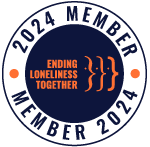GLA:D® – New exercise and education program to help manage osteoarthritis
“It hurts to walk.”
“I can’t get up and down from the floor.”
“These jars are impossible to open!”

Sound like you, or someone you know? Kevin Tran, UQ Healthy Living Physiotherapist, talks us through what OA is and how we can help manage this condition.
Osteoarthritis (OA) is a chronic and progressive condition that affects the movable joints of the body. It occurs due to degeneration of the smooth cartilage around our bones that normally allows for free and easy movement. This can lead to symptoms including joint pain, stiffness and swelling which may limit one’s ability to engage in physical, social, community and occupational activities.
What do the statistics say?
Although OA can affect all joints, the hip and knee joints are commonly affected due to the amount of load they have to carry for us to perform our activities of daily living such as walking, climbing stairs or getting out of a chair.
According to the Australian Institute of Health and Welfare, the prevalence of arthritis in 2017-18 was 8.2% across all ages, and 35.7% in the 75+ age-group. Interestingly, there has been an upward trend in the rate of total hip and knee replacements in Australia as an intervention for hip and knee OA. For knee OA specifically, there was a 38% rise in the rate of knee replacements from 2005-06 to 2017-18 suggesting that, unfortunately, we may be leaning towards surgical rather than more conservative treatment options.
How can you manage your OA?
The Royal Australian College of Practitioners has published the Guidelines for the management of knee and hip osteoarthritis (second edition – 2018). This is an excellent resource which details the recommendations for non-surgical management of hip and knee OA. Currently, there are strong recommendations for those with knee and/or hip OA to engage in weight management and land-based exercises, such as walking or muscle strengthening. There are conditional recommendations for popular interventions such as aquatic exercise and manual therapy, although these interventions are still under the microscope.
Introducing the GLA:D® Program
In 2021, UQHL will be offering The GLA:D® Program, which is an education and exercise program developed by Danish researchers for those with hip or knee OA. Due to its success with the overseas population, the program has been operational in Australia since 2017, being delivered by GLA:D® certified practitioners nationwide following training and accreditation with GLA:D® Australia. The program also follows the aforementioned Guidelines for the management of knee and hip osteoarthritis.
Research from The GLA:D® Program in Australia shows an average pain reduction of 36%, reduced analgesic consumption, reduction in perceived need for surgery, and clinically meaningful improvement in joint confidence (GLA:D Australia, 2018).
The program can consist of the following:
- An Initial Assessment (30-60mins): Goals are discussed and initial outcome measures obtained
- 2x Group Education Sessions (60-90mins) covering:
- Session 1: OA overview, risk factors and treatment
- Session 2: Exercises for OA, everyday activities and OA, coping and self help topics
- 12x Supervised Group Exercise Sessions: 60 mins twice per week, involving a warm up, a circuit and a cooldown, with a primary focus on neuromuscular exercises
- A Follow-Up Assessment: 3 months after initial assessment
- Online Questionnaire: 3 months and 12 months after initial assessment
Taking the next step
We are excited for the prospective launch of the GLA:D® program and hope we can assist you along your journey in staying healthy and active. Further details around class sizes, classes per week and costings of the GLA:D® program at UQHL will be made available soon. If you would like more information please contact us on (07) 3443 2586 or email uqhealthyliving@uqhealthcare.org.au to express your interest.
References
Image: A comparison between a knee with and without OA – Source: American Academy of Orthopaedic Surgeons
Australian Institute of Health and Welfare. (2020). What is osteoarthritis? Retrieved https://www.aihw.gov.au/reports/chronic-musculoskeletal-conditions/osteoarthritis/contents/what-is-osteoarthritis
Royal Australian College of General Practitioners. (2018). Guidelines for the management of knee and hip osteoarthritis. Retrieved https://www.racgp.org.au/download/Documents/Guidelines/Musculoskeletal/guideline-for-the-management-of-knee-and-hip-oa-2nd-edition.pdf
GLA:D Australia. (2017). GLAD Program Structure. Retrieved https://gladaustralia.com.au/glad-program-structure/



Thank you for the helpful information. If you want to know more about foot problems, treatment and others, you can visit this site.
https://calgarypodiatry.ca/